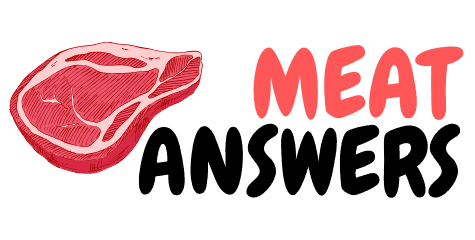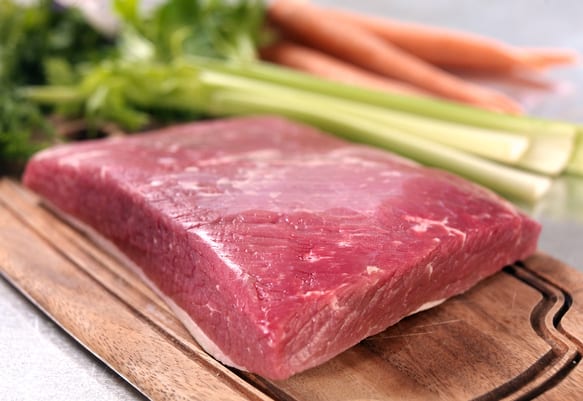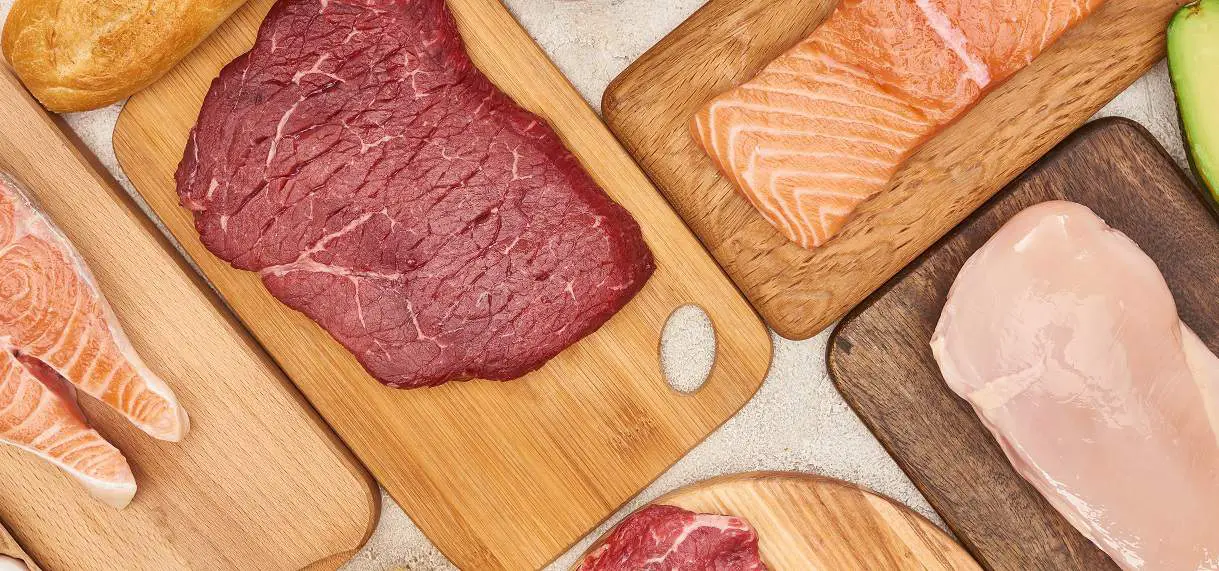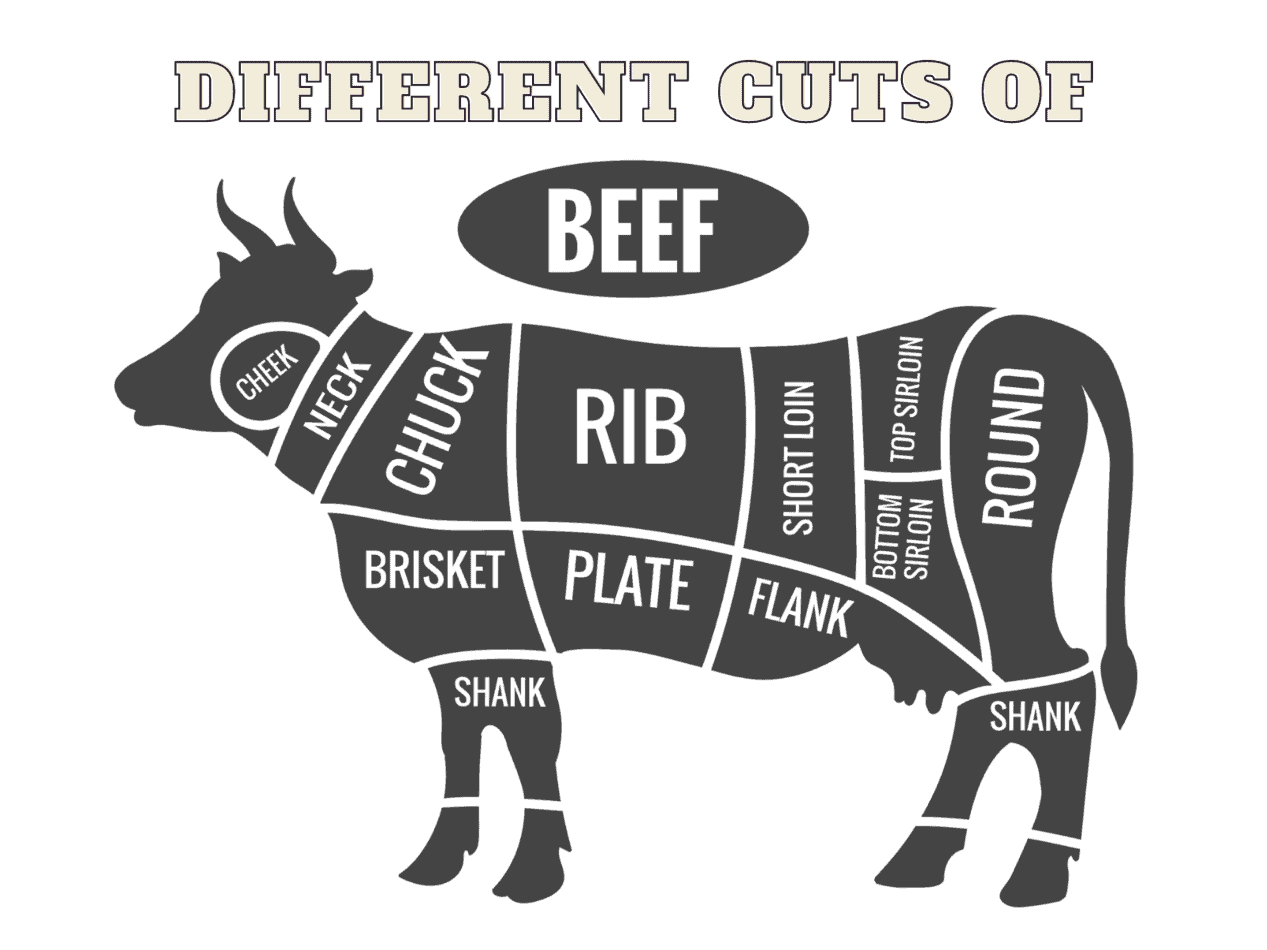Cutting meat is an underrated aspect of preparing meat. Many people simply cut the meat whatever direction is the most convenient. And that is a huge mistake. This article will cover everything that you need to know about cutting meat.
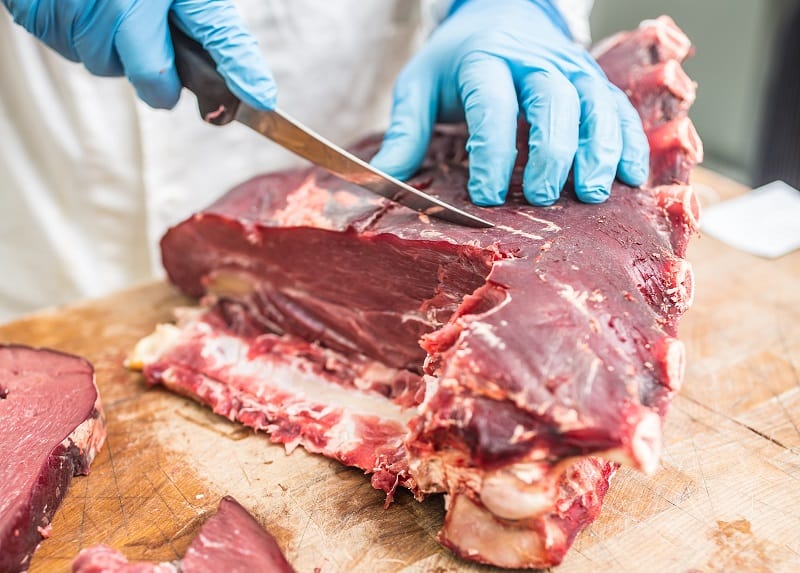
To answer the question, the best way to cut meat is against the grain. There are some scenarios where it makes sense to cut the meat with the grain, but it’s almost always the wrong way. Don’t worry, I’ll cover all the possible scenarios.
Table of Contents
- 1 What is the grain of meat?
- 2 How to determine the direction of the grain?
- 3 What cutting meat against the grain means?
- 4 Why it is important to slice meat against the grain?
- 5 What happens if you cut meat with the grain?
- 6 Should flank stake be cut against the grain?
- 7 What about cutting meat diagonally with the grain?
- 8 Why is chewy meat bad?
- 9 What direction should I cut processed meat?
- 10 Does fish have a grain?
- 11 Tips for Cutting Meat Against the Grain
- 12 How to Cut Meat Against the Grain in a Meat Slicer?
- 13 Cutting Cooked Meat Against the Grain
- 14 How to Cut Cooked Meat the Right Way?
- 15 Cutting Cooked Meat Against the Grain – FAQ
- 16 Final Thoughts
What is the grain of meat?
The grain is simply the muscle fibers in meat. You will often notice the grain as striations or lines in your cut of meat. Yes, those lines are considered the grain. It’s a similar concept to the grain on your wood cutting board.
How to determine the direction of the grain?
Simply look at the direction of the lines in your meat. That direction is the direction of the grain. It’s sometimes difficult to find on certain types and cuts of meat, but if you look closely you should find it.
What cutting meat against the grain means?
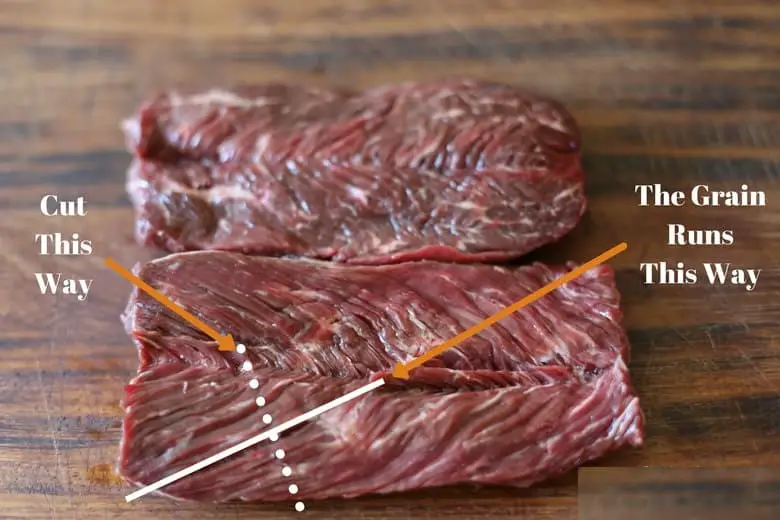
Cutting meat against the grain means cutting perpendicular to the grain. Basically, cut the meat so that the length of the grain in each cut is short. If the grain on your slice is the length (not width) of the slice, then you have cut the meat with the grain.
Why it is important to slice meat against the grain?
Slicing meat against the grain is important because it results in a tenderer slice of meat. Think about it, a long grain means more chewing because you have to chew long strings of muscle fibers. Now, a shorter grain will have more fibers, but they’re small enough that you can chew them in fewer bites.
What happens if you cut meat with the grain?
Cutting meat with the grain results in a messier cut, drier meat, chewier meat, and less flavorful meat.
First, cutting with the grain results in a messier cut because the edge of the cut will often flake. This isn’t too big of a problem, but some people really enjoy a clean cut of meat. And a clean cut obviously looks better.
Dry meat, on the other hand, is something that almost no one enjoys. Unfortunately, cutting with the grain will cause the meat to dry out when you cook it. Of course, dry meat is also much chewier, and people don’t enjoy the extra chewing.
Finally, cutting with the grain will result in less flavor because the meat has fewer muscle fibers to hold in the flavor. I know it sounds strange, but it’s something chefs have noticed over time.
Should flank stake be cut against the grain?
Yes, you should always cut flank steak against the grain. Flank steak is a very lean cut of meat with long muscle fibers. And it will be too chewy if you cut it with the grain.
What about cutting meat diagonally with the grain?
You can cut meat diagonally with the grain if you want. Personally, I don’t recommend this method since it can get a little messy. You will also end up with different sized slices of meat.
That said, it does have it’s place. If you like slightly chewy meat, then you should cut the meat diagonally against the grain.
Why is chewy meat bad?
Chewy meat isn’t inherently bad – it tastes perfectly fine. However, most people don’t like to chew their food that much. If cooking for other people, you should cut the meat against the grain for the benefit of your guests.
What direction should I cut processed meat?
Processed meat doesn’t have a grain, so it doesn’t matter which direction you cut it. You usually want equal-sized slices, though.
Does fish have a grain?
Fish does have a grain. However, most fish is so tender and flaky that it will be tender no matter which way you cut it. Most home cooks shouldn’t concern themselves with the grain of fish.
Also, fish isn’t meat.
Tips for Cutting Meat Against the Grain
Here are some tips for cutting meat against the grain. I know it sounds simple, but you would be surprised at how many people mess up the process of cutting meat.
Cut it Cold
This, in my opinion, is one of the biggest mistakes that beginners make when they cut meat. They will often thaw the meat, and then cut it while it’s warm.
Warm meat is much more likely to fall apart when you cut it. I recommend putting the meat in the freezer for 10 minutes before cutting it. Though, you can put it in the refrigerator for as long as you want.
The most important part is that the meat is a little cold because that makes it stick together a little more. And that makes it so much easier to cut.
Cut it Raw
Generally, you want to cut meat while it’s raw. Cooked meat is much more likely to shred when cutting it. Cutting meat raw also increases the amount of flavor it absorbs during cooking, so that’s another good reason to do it.
If you cook raw meat, you do have to be careful to not dry the meat out while cooking it. I recommend cooking at high heat for a short amount of time. Definitely don’t cook small sizes slices of meat at medium heat for a long time – that’s how you get chewy meat!
Use a Sharp Knife
Cutting against the grain is slightly more difficult than cutting with the grain. Just think about it, you have to cut through muscle fibers rather than with them.
It’s not easy!
This is why I recommend using a very sharp knife to cut meat against the grain. The sharpest knife you have is the best option. If that isn’t available, then make sure to cut slowly. It will take longer cutting slowly, but you really don’t want to press down on the meat.
Use a Smooth Blade
You should always use a smooth blade when cutting meat because it is less likely to tear the meat. In other words, you will get a much cleaner cut of meat. It’s also easier to keep a smooth blade sharp, so there is that benefit.
Of course, you should have a serrated blade in your kitchen for cutting bread. Serrated blades actually work great for cutting bread, but not that great for cutting meat.
Use a Cutting Board
Many people will try to cut meat on a plate, and that does work. But it does not work very well. I recommend always using a cutting board when you plan on cutting meat with a knife.
Doing so allows you to more effectively cut the meat. Remember, cutting against the grain is slightly more difficult than cutting with the grain, so any extra stability helps the cutting process.
Cut Perpendicular to The Grain
Cutting perpendicular to the grain is the most important part of cutting against the grain. In fact, cutting perpendicular to the grain is the definition of cutting against the grain.
You don’t need to pull a protractor out to measure the angle. Simply cut it as close as possible to perpendicular.
Cut Equal-Sized Slices
This tip only applies if you plan on cutting raw meat, which you should always do. This is a very important step because unequal slices will require different cooking times. That means you will end up with some meat that is well-cooked, and some meat that is less cooked.
Now, if you are cutting cooked meat, then the slice size really doesn’t matter. It is nice to chew the same sized cuts of meat, but it’s not nearly as critical.
How to Cut Meat Against the Grain in a Meat Slicer?
Cutting meat in a meat slicer is a little different than using a knife since you can’t move the blade. Here are some tips for slicing meat against the grain in a meat slicer. Don’t worry, it’s not that much different. These are just some things you should know.
Properly Position the Meat
Proper positioning is the most important of using a meat slicer. You should place the meat at a 90-degree angle to the blade. I know this can sometimes be an awkward position to place meat in a meat slicer, but it’s the best way to do it.
Go Slow
As I’ve already covered, cutting meat against the grain is a little more difficult. For that reason, I recommend going very slow when cutting meat against the grain in a meat slicer.
If you go too fast, then you will probably shred the meat. And you definitely don’t want shredded meat.
Use a Smooth Blade
Most meat slicers come with a serrated blade, which is great for cutting bread. Unfortunately, it’s not very good for slicing meat. It’s especially bad when trying to cut against the grain.
With that in mind, I recommend using a smooth blade when cutting meat in a meat slicer.
Slice Cooked Meat
You generally shouldn’t use a meat slicer to cut raw meat. It just doesn’t work that well, and it will often turn into a huge mess.
Just don’t slice raw meat in a meat slicer.
Remove the Bone
Meat slicers don’t cut through bones very well, so make sure to remove them before trying to cut the meat. This step isn’t necessary if you’re careful. Unfortunately, most people aren’t careful when using a meat slicer. And it only takes the blade knicking the bone to cause a huge problem.
Just remove the bone beforehand. It will prevent a lot of problems.
Remove the Fat
Meat slicers also don’t cut through fat very well. Just think about the texture of fat compared to the texture of meat.
Fat is much softer and has no grain, which will cause it to stick to the slicer blade.
Cutting Cooked Meat Against the Grain
Cutting cooked meat against the grain is a little different than cutting raw meat. This section will cover everything you need to know about it. Don’t worry, it’s not that much different, but there are some things you should know.
How to Cut Cooked Meat the Right Way?
Cutting cooked meat against the grain is easy. There are a few important things you should know before cutting, though.
Let the Meat Cool Down
Many beginners omit this step. They simply rush to cut their meat as soon as they finish cooking it. This is a huge mistake because juices will escape if you cut the meat when it’s too hot.
I recommend waiting at least five minutes before cutting the meat since the meat will still be warm. Some people wait as long as fifteen minutes, which is fine. However, most people don’t have the patience to wait that long.
Hold the Meat with Tongs
Pretty much everyone will use a fork to hold the meat as they cut it. It does work – it’s just not ideal since it’s so unstable. I recommend using tongs to hold the meat as you cut it.
It will take some getting used to, but it will work much better in the long term. Using tongs to hold the meat also looks a lot cooler.
Cut at an Angle
You already know to cut against the grain, but you also need to cut the meat at the proper angle. You generally don’t want to cut meat straight down because it’s a little more difficult. Most people will cut meat at a slightly downward angle to make things easier.
Slicing this way can also make the slices thinner if you need thin slices.
Remove the Fat (applicable for cutting Beef)
You should remove the fat on beef before eating. It does taste great, but most people don’t enjoy the texture.
Beef fat also provides some good flavor while cooking, so don’t cut it off before cooking the steak.
If you have pork or chicken, then you should keep the fat on it. Pork fat is especially tasty. And chicken fat is barely even noticeable while still adding plenty of flavor.
Cutting Cooked Meat Against the Grain – FAQ
What cooked meat should I cut against the grain?
I recommend cutting steak and pork chops while they are cooked. This is especially true when you grill steaks or pork chops. No one grills cut steak or pork chops – that’s just weird.
Why should I cut cooked meat against the grain?
Cutting cooked meat allows the juices to stay in the meat, which actually makes it taste better. However, this only really applies to steak and pork. Chicken is usually tender enough that the direction you cut it doesn’t matter.
Final Thoughts
Well, that about covers it for everything that you need to know about cutting meat against the grain. It’s just something that you always want to do if you like tender meat, and almost everyone likes tender meat.
I made the mistake of always cutting with the grain when I first started cooking – mostly because it was easier. It took me an embarrassingly long time to figure out why my meat was so chewy.
Anyway, don’t be like me. Cut your meat the right way – you’ll enjoy it more.
